Creamy Korean Ssamjang (쌈장) Pasta

Succulent pork belly tossed in a spicy, umami-rich ssamjang cream sauce with spaghetti — a Korean barbecue–inspired fusion that's ready in 25 minutes.
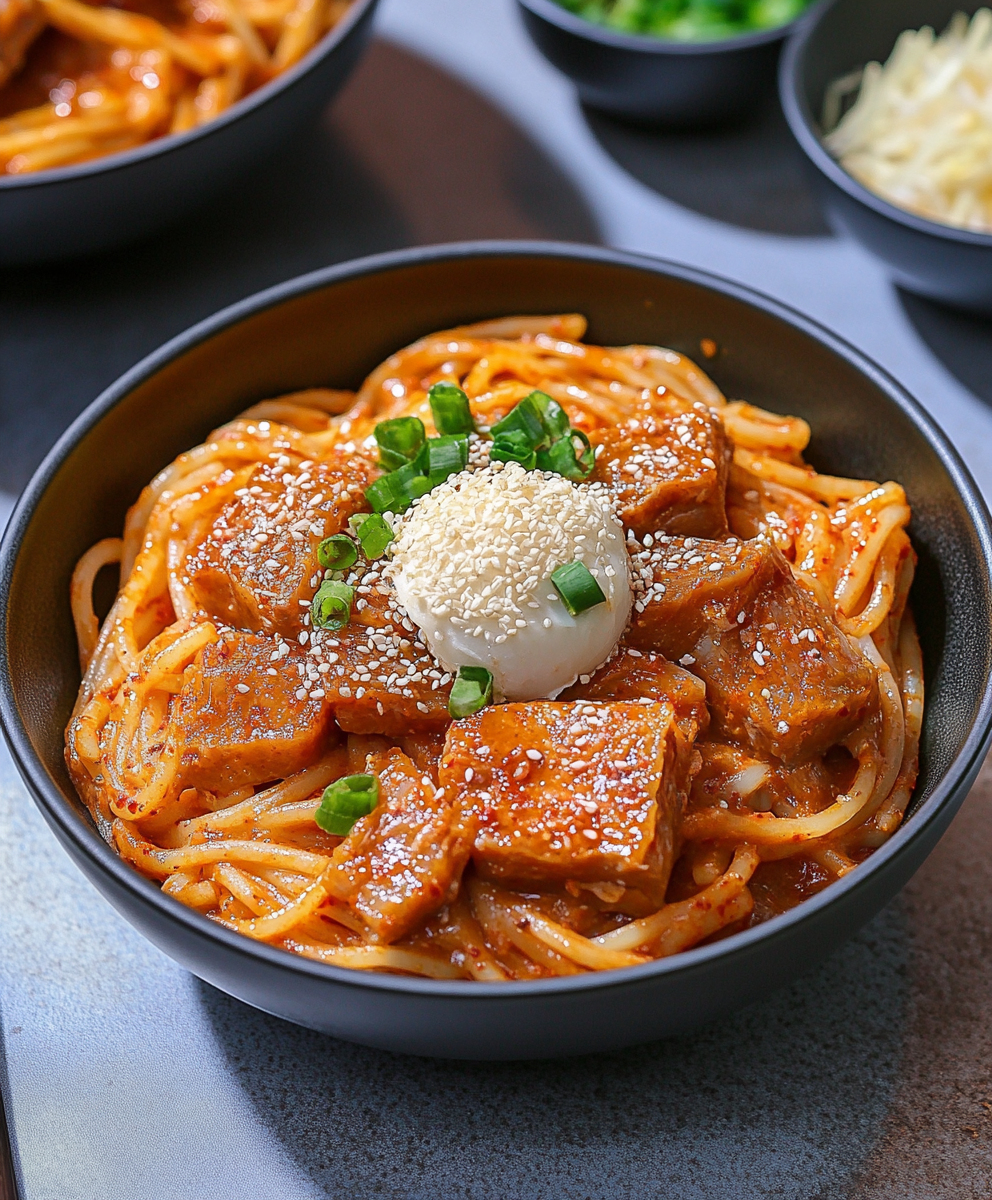
This creamy Korean ssamjang (쌈장) pasta was born out of a craving for the rich, spicy-salty bite of pork belly ssam at my favorite Korean barbecue. I first tried combining the fermented, umami-packed ssamjang with cream while playing with pantry ingredients on a weeknight, and the result surprised me: the bold flavors that usually live on a lettuce wrap translate beautifully into a silky pasta coating. The pork belly becomes lacy with rendered fat and provides those little pockets of savory richness that make every bite memorable. This is the kind of dish that turns strangers into instant fans and gets requests for the recipe at family dinners.
What I love about this version is how quickly it comes together. From start to finish it's a 25-minute affair, so it works for busy evenings yet feels indulgent enough for a relaxed weekend meal. The sauce balances heat, salt, and umami — ssamjang gives the backbone, garlic and Parmesan add depth, and a splash of reserved pasta water finishes the sauce into something silky and clingy. Garnish with green onions and a soft boiled egg for color, texture, and extra richness. Serve with kimchi on the side for contrast and you have a satisfying, Korean-inspired plate that still comforts like classic Italian pasta.
Why You'll Love This Recipe
- Ready in 25 minutes, this plate is perfect for weeknights when you want something special without spending hours in the kitchen.
- Uses pantry-friendly ingredients: ssamjang, spaghetti, cream, and Parmesan come together in a unique fusion that is accessible and bold.
- Make-ahead friendly: cook the pork belly and keep the sauce base chilled for quick reheating; finishes in under 10 minutes.
- Crowd-pleasing: the combination of creamy, spicy, and salty appeals to a wide range of palates and pairs well with simple sides like kimchi or a green salad.
- Customizable heat: add more red pepper flakes for a pronounced kick or tone it down for kids and sensitive eaters.
- Textural contrast: crisp-edged pieces of pork belly against silky sauce and al dente spaghetti makes every forkful interesting.
In my kitchen this dish has a reliable applause factor. The first time I served it to friends they commented on how the ssamjang tasted familiar yet exciting in pasta form. My partner insisted on adding an extra soft-boiled egg and more scallions, which is now a ritual when we make this. It’s simple enough to improvise but structured enough that the results are consistently excellent.
Ingredients
- Spaghetti: 7 ounces dry spaghetti (about 200 grams). Choose a high-quality brand like De Cecco or Barilla for firm texture; measure by weight for consistent results.
- Pork belly: 5 ounces pork belly (about 150 grams), cut into 1-inch slabs. Look for streaky slices with a good ratio of fat to meat so pieces render and crisp nicely.
- Butter: 1 tablespoon unsalted butter to base the sauce and add silkiness; plug in salted butter if you prefer but reduce added salt.
- Garlic: 1 tablespoon minced fresh garlic. Fresh provides sharper aromatics than jarred; finely mince for even distribution.
- Ssamjang: 3 tablespoons. Use a reputable Korean brand such as CJ or Sempio for authentic fermented soybean and chili paste flavor.
- Parmesan cheese: 1/3 cup finely grated Parmesan plus extra for serving. Freshly grated yields better melt and flavor than pre-grated powder.
- Cream: 3/4 cup heavy cream (about 6 fluid ounces or 180 milliliters). Heavy cream gives the sauce body and helps tame the ssamjang’s assertiveness.
- Seasonings: Freshly ground black pepper to taste; red pepper flakes to taste for extra heat; kosher salt sparingly since ssamjang and Parmesan are salty.
- Optional garnishes: Sliced green onions, soft boiled egg, extra Parmesan, and kimchi on the side for brightness and acidity.
Instructions
Prepare and cook pork belly: Heat a heavy skillet over medium-high heat until hot. Add pork belly slabs in a single layer; you do not need additional oil because the fat will render. Pan-fry until edges are deeply golden and the fat has rendered, about 6 to 8 minutes per side depending on thickness. Transfer to a cutting board, lightly season with a pinch of salt, and cut into bite-size pieces. Set aside and reserve skillet drippings for flavor. Boil pasta: Bring a large pot of water to a rolling boil and salt generously (about 1 tablespoon kosher salt per 4 quarts). Add the spaghetti and cook until just shy of al dente according to package directions; typically 8 to 9 minutes for 7-ounce spaghetti. Before draining, reserve about 1 cup of the starchy pasta water — you will not use it all but it’s essential for adjusting sauce consistency. Build the sauce: In the skillet with pork drippings over medium heat, add 1 tablespoon butter. When it foams, add 1 tablespoon minced garlic and sauté 30 to 45 seconds until fragrant but not browned. Stir in 3 tablespoons ssamjang and cook for 30 seconds to bloom the paste in the fat. Pour in 3/4 cup heavy cream and bring to a gentle simmer. Let the sauce reduce on medium-low for 2 to 3 minutes, stirring, until slightly thickened and unified. Add the cut pork belly to reheat in the sauce. Finish with pasta and cheese: Add drained spaghetti to the pan and sprinkle in 1/3 cup grated Parmesan. Toss vigorously with tongs to combine. Add black pepper and red pepper flakes to taste. Slowly add reserved pasta water a few tablespoons at a time while tossing until the sauce becomes glossy and clings to the pasta. You’ll likely use between 2 and 6 tablespoons; stop when the texture is silky and not soupy. Taste for salt and adjust carefully, since ssamjang and Parmesan are already salty. Plate and garnish: Divide between plates. Top each serving with more grated Parmesan, chopped green onions, and a soft boiled egg if using. Serve immediately with kimchi on the side for a bright, acidic counterpoint.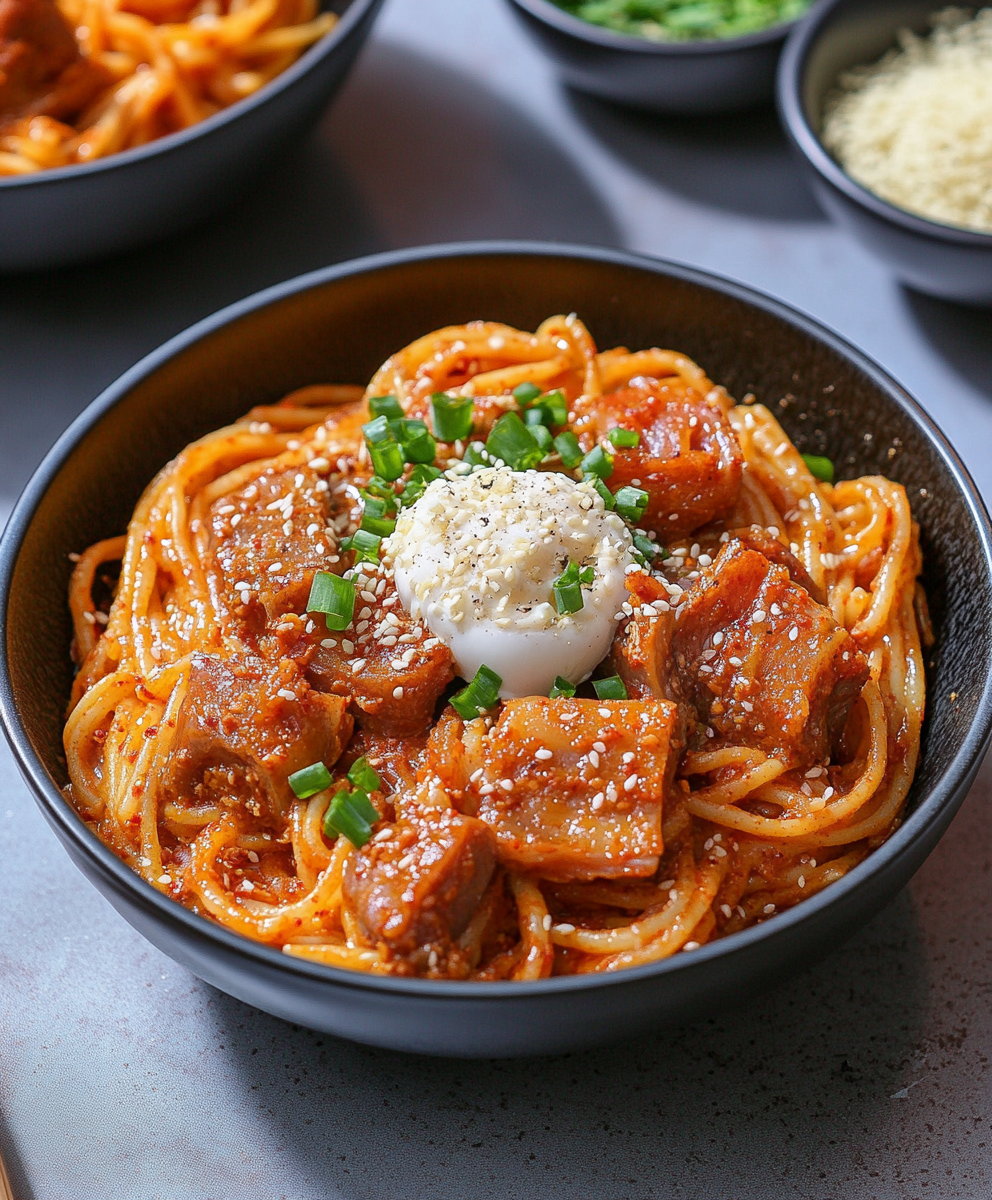
You Must Know
- This dish is relatively high in calories and fat because of pork belly and heavy cream; it is indulgent and best enjoyed as an occasional treat.
- Leftovers keep well in the refrigerator for up to 3 days; the sauce will thicken, so loosen with a splash of milk or water when reheating.
- Freezing is not recommended because cream sauces can separate; if you must freeze, freeze the components separately and reheat gently.
- Ssamjang contains fermented soybean paste and often chili, so it provides umami and salt — reduce added salt elsewhere to prevent oversalting.
- Reserve pasta water is essential: the starch is what turns the cream and cheese into a glossy emulsion that clings to the noodles.
My favorite part is the contrast between crisped pork edges and the silky sauce. The first time I made this for friends, someone commented that it tasted like two cultures holding hands — Korean barbecue brightness and Italian comfort. That comparison stuck because this plate truly balances boldness and comfort, making it a repeat on our menu whenever we want something comforting but different.
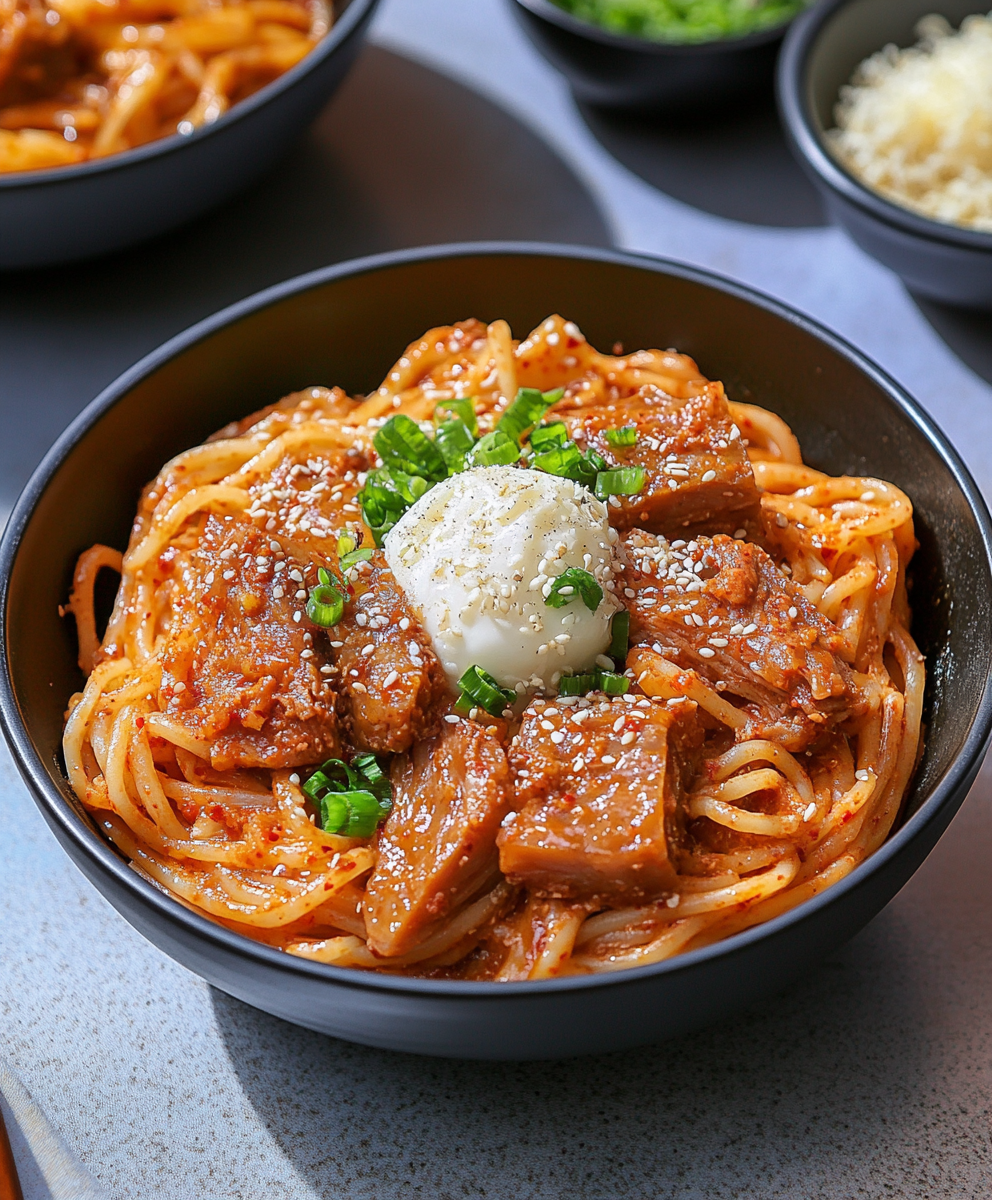
Storage Tips
Store cooled leftovers in an airtight container in the refrigerator for up to 3 days. To reheat, warm gently over low heat in a skillet with a splash of water, milk, or reserved pasta water to reincorporate the sauce; stir constantly until glossy. Do not microwave at high heat, as the cream can separate and the texture will suffer. If you want to prep in advance, cook the pork belly and make the sauce base, cool and refrigerate separately from cooked pasta. When ready to serve, reheat the sauce and toss with freshly cooked or reheated pasta for best texture.
Ingredient Substitutions
If you cannot find pork belly, use thinly sliced bacon or pancetta for a similar fatty profile; reduce added salt because those are salty. For a lighter option, substitute thin pork shoulder slices and finish with a tablespoon of olive oil. Replace heavy cream with half-and-half for a slightly lighter sauce, but expect a thinner coating and less richness. If you need gluten-free, use rice or gluten-free spaghetti and ensure the ssamjang brand is wheat-free. For a vegetarian twist, omit pork and sauté shiitake mushrooms and a splash of soy sauce to build umami.
Serving Suggestions
Serve with a small side of kimchi or quick pickled cucumbers to cut through the richness. A crisp green salad with sesame dressing complements the savory sauce. For a restaurant-style presentation, place the soft-boiled egg in the center, scatter sliced scallions, and finish with a drizzle of toasted sesame oil. Pair the plate with a light lager or a citrusy white wine to balance fat and salt. This dish also works as a shareable when plated family-style.
Cultural Background
Ssamjang is a traditional Korean condiment made from a blend of fermented soybean paste (doenjang), red chili paste (gochujang) or chili flakes, garlic, sesame oil, and sometimes sugar — a savory and spicy paste used as a dip for lettuce-wrapped meat. Transforming it into a cream-based sauce is a modern fusion idea that borrows the boldness of Korean barbecue while leveraging the comfort and technique of Italian pasta finishing. This combination celebrates how fermented flavors can play nicely with dairy to create depth and complexity.
Seasonal Adaptations
In warmer months lighten the dish by swapping heavy cream for a mixture of Greek yogurt and milk stirred in off the heat to prevent curdling. Add seasonal vegetables like blanched asparagus or snap peas for brightness. In cooler months, increase the pork belly portion and add roasted root vegetables for heartiness. For holiday gatherings, double the recipe and serve family-style with additional garnishes like toasted sesame seeds and microgreens.
Meal Prep Tips
For efficient meal prep, pan-fry several slabs of pork belly ahead of time and chill; reheat in the sauce when ready to serve. Make the sauce base (but do not finish with pasta or cheese) and store it in the fridge for up to 2 days. Cook pasta just before serving for best texture; if you must cook early, toss with a little oil to prevent sticking and refresh by briefly dunking in boiling water before adding to the sauce. Pack components separately if taking to work or reheating later.
This fusion plate brings together two comforting traditions into a dish that feels indulgent yet approachable. Whether you make it for a weeknight dinner or a cozy weekend meal, it’s an easy way to enjoy deep Korean flavors in a format everyone loves. Try it, tweak it, and make it yours.
Pro Tips
Reserve at least 1 cup of pasta water before draining; use it sparingly to adjust sauce consistency and create a glossy emulsion.
Cook pasta just shy of al dente and finish in the sauce to allow the noodles to absorb flavor without becoming mushy.
If the sauce becomes too thick when reheating, add a tablespoon of warm liquid at a time until silky; avoid high heat to prevent separation.
Taste for salt at the end because ssamjang and Parmesan are already salty; add only if necessary.
This nourishing creamy korean ssamjang (쌈장) pasta recipe is sure to be a staple in your kitchen. Enjoy every moist, high protein slice — it is perfect for breakfast or as a wholesome snack any time.
Tags
Creamy Korean Ssamjang (쌈장) Pasta
This Creamy Korean Ssamjang (쌈장) Pasta recipe makes perfectly juicy, tender, and flavorful steak every time! Serve with potatoes and a side salad for an unforgettable dinner in under 30 minutes.

Ingredients
Pasta
Pork Belly
Sauce
Garnish and Serving
Instructions
Cook and crisp pork belly
Pan-fry pork belly slabs in a hot heavy skillet over medium-high heat until edges are golden and fat is rendered, 6 to 8 minutes per side. Transfer to a board, season lightly with salt, and cut into bite-size pieces. Reserve drippings in the pan.
Boil spaghetti
Bring a large pot of water to a rolling boil and salt generously. Add 7 ounces dry spaghetti and cook until nearly al dente according to package timing. Reserve 1 cup pasta water before draining.
Make ssamjang cream sauce
In the skillet with rendered pork fat, add 1 tablespoon butter, then 1 tablespoon minced garlic and sauté until fragrant. Stir in 3 tablespoons ssamjang, then pour in 3/4 cup heavy cream and simmer for 2 to 3 minutes until slightly reduced.
Combine pasta and finish
Add drained spaghetti and 1/3 cup grated Parmesan to the skillet. Toss to combine, add pork belly to reheat, then slowly drizzle reserved pasta water a few tablespoons at a time while tossing until the sauce is glossy and clings to the noodles. Season with black pepper and red pepper flakes to taste.
Serve and garnish
Plate immediately and top with extra Parmesan, sliced green onions, and a soft boiled egg if desired. Serve with kimchi on the side.
Last Step: Please leave a rating and comment letting us know how you liked this recipe! This helps our business to thrive and continue providing free, high-quality recipes for you.
Nutrition
Did You Make This?
Leave a comment & rating below or tag
@kitchenfunwithmy3sons on social media!

Categories:
You might also like...
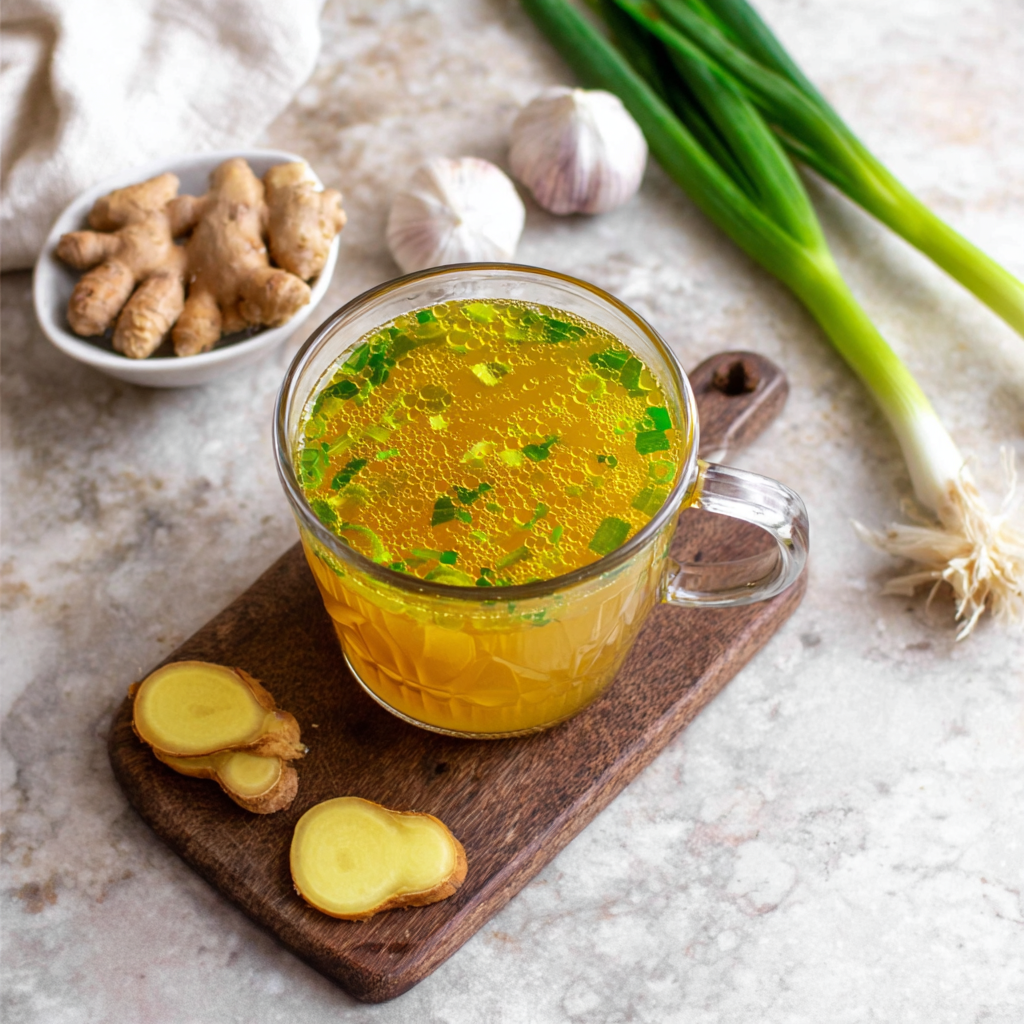
10 Minute Immune-Boosting Broth
A quick, nourishing broth packed with miso, garlic, ginger, turmeric and horseradish — ready in 10 minutes and perfect for immune support and soothing comfort.
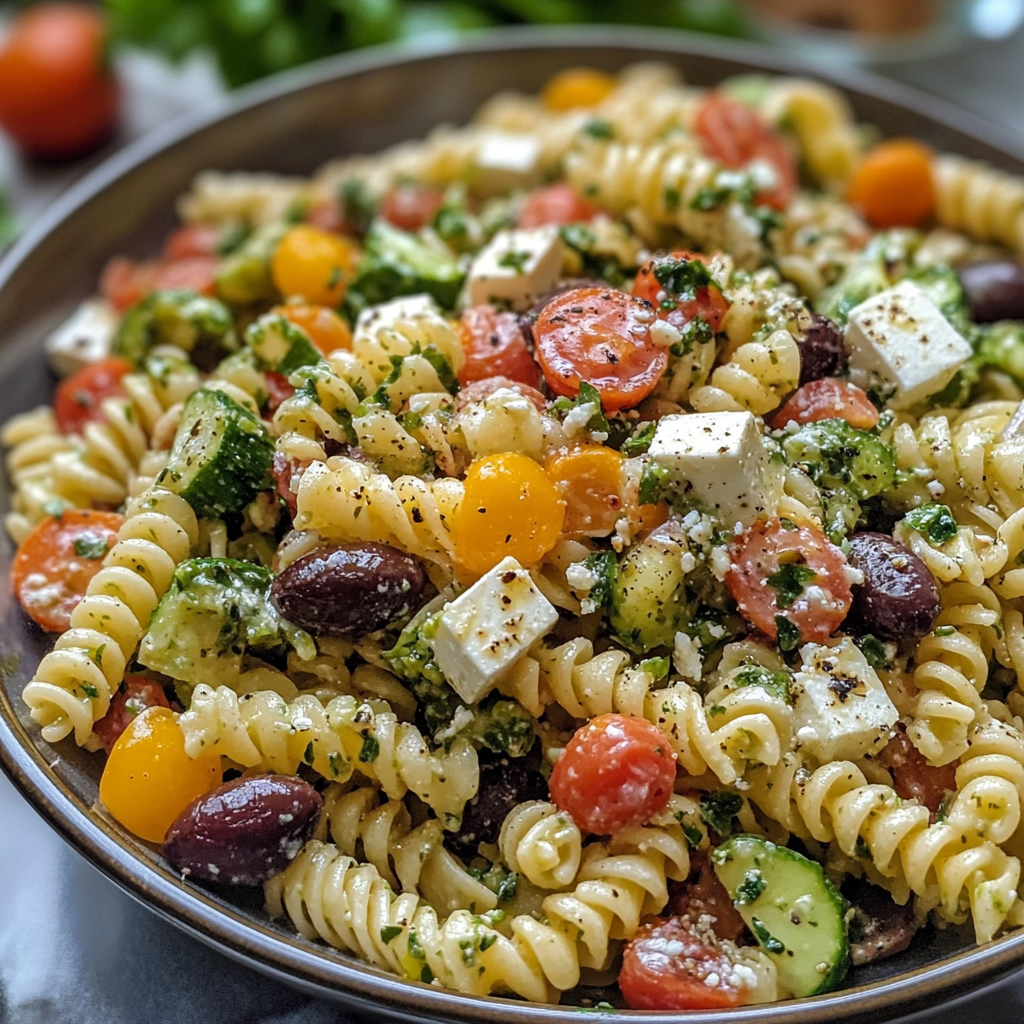
20-Minute Greek Pasta Salad
A bright, tangy Greek-inspired pasta salad with cucumbers, cherry tomatoes, Kalamata olives, chickpeas and feta—ready in 20 minutes and perfect for picnics, potlucks, or a quick weeknight meal.

4-Ingredient Mini Pizzas
Quick, customizable mini pizzas made from refrigerated biscuit dough — ready in about 20 minutes and perfect for weeknight dinners or party food.

Did You Make This?
Leave a comment & rating below or tag @kitchenfunwithmysons on social media!
Rate This Recipe
Share This Recipe
Enjoyed this recipe? Share it with friends and family, and don't forget to leave a review!
Comments (1)
This recipe looks amazing! Can't wait to try it.
Comments are stored locally in your browser. Server comments are displayed alongside your local comments.
Hi, I'm Julia!
What's Popular
Get My 30-Minute Meals email series!
Quick and easy dinner ideas delivered to your inbox.

